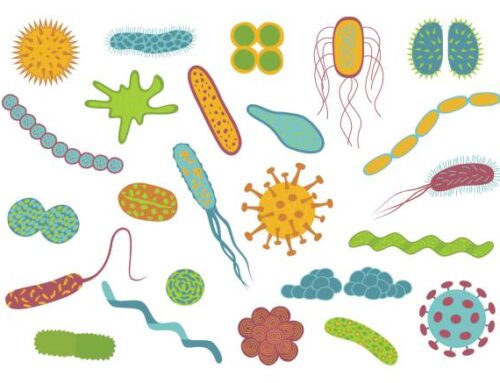Original article by by Joyce Frieden
WASHINGTON — Making progress in addressing social determinants of health (SDOH) requires efforts in three areas, Karen DeSalvo, MD, former head of the Office of the National Coordinator for Health Information Technology, said here Wednesday. DeSalvo, who is now professor of population health at the University of Texas at Austin and a co-convener of the National Alliance to Impact the Social Determinants of Health, noted that about 5% of patients account for about 50% of healthcare costs. “These people are not just medically complicated but socially complicated,” she said at an SDOH event sponsored by the Hatch Center. “These are people not only with chronic conditions, but who tend to be older, with less income and less formal education, and they tend to be on Medicare or Medicaid and have fewer resources … It’s just a clinical reality we’ve all been knowing.”
 SDOH are “conditions in the environments in which people are born, live, learn, work, play, worship, and age that affect a wide range of health, functioning, and quality-of-life outcomes and risks,” according to Healthy People 2020, an initiative by the Department of Health and Human Services. Addressing those components requires three things:
SDOH are “conditions in the environments in which people are born, live, learn, work, play, worship, and age that affect a wide range of health, functioning, and quality-of-life outcomes and risks,” according to Healthy People 2020, an initiative by the Department of Health and Human Services. Addressing those components requires three things:
Awareness: That involves using data to identify the social needs of individuals, DeSalvo explained. Most people who have been identified with social needs are enrolled in public health insurance programs, but some private payers are getting involved as well, she said. One good example of this occurred at Cottage Health, a health system in Santa Barbara, California. “They learned something as they were doing assessments of social need; they learned that they had a lot of employees who were low-wage and struggling with housing and transportation, and that caused them to turn attention to their employee base, so that was a very ‘A-ha!’ moment for them.” Another example is the University of Arkansas Medical Center, which “is using natural language processing to pull [information] from social services, and dietary notes [for inpatients] to identify people who are at risk and have a need. It’s a low-burden approach.”
Assistance: That means “not just asking someone if they’re going to bed hungry, but helping refer them for support for that,” she said. Children’s Mercy Hospital in Kansas City, Missouri, “wants to make it easy for people to seek out help and get help so they consolidated their resources … into a really beautiful physical environment,” she explained. That means a social worker there will have access to a variety of resources for clients — everything from the Women, Infants, and Children (WIC) program to a list of mechanics who are willing to fix client cars for free.
Alignment: Alignment involves not just asking whether someone is hungry and referring them to a service like Meals on Wheels, “but thinking about the whole
food system in the community — and doing that in partnership with others, not just in an individual health system,” said DeSalvo. For example, Oklahoma Route 66, an organization based in Tulsa and Oklahoma City, “is a group of healthcare providers, mostly primary care but also hospitals and specialists, working on aligning community resources to meet unmet social needs … they made adecision to create a resource center in the health departments in those communities.”
If everyone knows the importance of SDOH, why aren’t people in healthcare working harder to address these issues?
Marc Harrison, MD, president and CEO of Intermountain Healthcare, a large health system in Utah, suggested one big reason. “It’s still too easy to make money on fee-for-service; the motivation is just not there,” he said. “There is a lack of courage to re-orient our business model.” “We spend 90% of our dollars on hospitals and clinics, and that only contributes about 10% to the overall health of the population; that doesn’t make any sense,” Harrison said. “We need to change up our game, and we need to do it fast.” You might think the federal government — especially the Department of Health and Human Services (HHS) — would be the perfect place to work on these issues, HHS Secretary Alex Azar told the audience. “Social determinants would be important to HHS even if all we did was healthcare services, but at HHS, we cover health and human services, all under one roof. In our very name and structure, we are set up to think about all the needs of vulnerable Americans, not just their healthcare needs.”
“Unfortunately, that’s not always how things work,” he said. “HHS spends over $1 trillion a year on healthcare for elderly and vulnerable Americans through Medicare and Medicaid, which far outstrips any other investments the federal government makes in Americans’ well-being outside of healthcare.” But HHS is starting to get on the social determinants track, Azar explained. “Last year, the Center for Medicare & Medicaid Innovation launched the Accountable Health Communities model. Under the model, participating providers screen high utilizers of healthcare services for food insecurity, domestic violence risk, and transportation, housing and utility needs. If needed, patients are set up with navigators, who can help determine what resources are available in the community to meet the patient’s needs.”
Medicare Advantage plans also are interested in addressing social determinants, especially because they know doing so will bring down health costs, he said. “The key is just that we need to give them the flexibility to do this, which we generally haven’t done. But starting next year, plans will now be allowed to pay for a wider array of health-related benefits, such as transportation and home health visits. Starting in 2020, we are going to be expanding that range of benefits even more to include home modifications, home delivered meals and more.”



